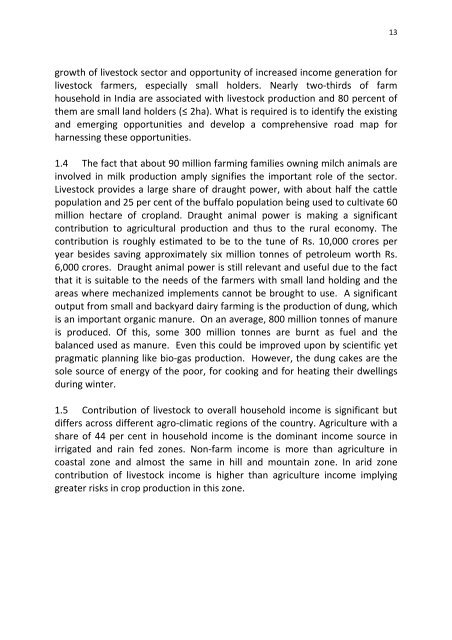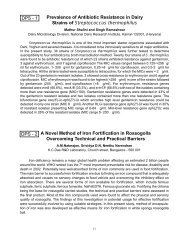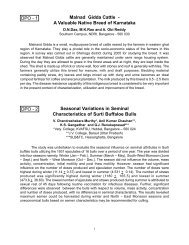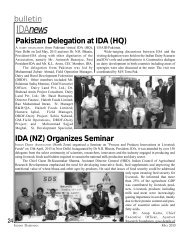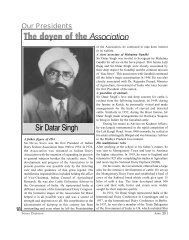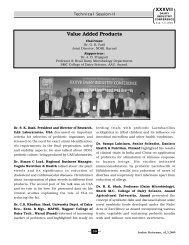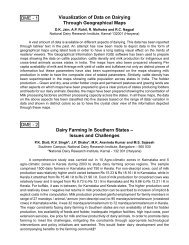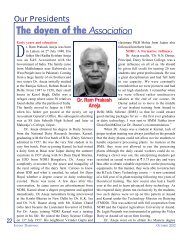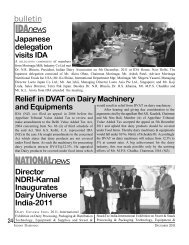Volume - Indian Dairy Association
Volume - Indian Dairy Association
Volume - Indian Dairy Association
- No tags were found...
Create successful ePaper yourself
Turn your PDF publications into a flip-book with our unique Google optimized e-Paper software.
13growth of livestock sector and opportunity of increased income generation forlivestock farmers, especially small holders. Nearly two‐thirds of farmhousehold in India are associated with livestock production and 80 percent ofthem are small land holders (≤ 2ha). What is required is to identify the existingand emerging opportunities and develop a comprehensive road map forharnessing these opportunities.1.4 The fact that about 90 million farming families owning milch animals areinvolved in milk production amply signifies the important role of the sector.Livestock provides a large share of draught power, with about half the cattlepopulation and 25 per cent of the buffalo population being used to cultivate 60million hectare of cropland. Draught animal power is making a significantcontribution to agricultural production and thus to the rural economy. Thecontribution is roughly estimated to be to the tune of Rs. 10,000 crores peryear besides saving approximately six million tonnes of petroleum worth Rs.6,000 crores. Draught animal power is still relevant and useful due to the factthat it is suitable to the needs of the farmers with small land holding and theareas where mechanized implements cannot be brought to use. A significantoutput from small and backyard dairy farming is the production of dung, whichis an important organic manure. On an average, 800 million tonnes of manureis produced. Of this, some 300 million tonnes are burnt as fuel and thebalanced used as manure. Even this could be improved upon by scientific yetpragmatic planning like bio‐gas production. However, the dung cakes are thesole source of energy of the poor, for cooking and for heating their dwellingsduring winter.1.5 Contribution of livestock to overall household income is significant butdiffers across different agro‐climatic regions of the country. Agriculture with ashare of 44 per cent in household income is the dominant income source inirrigated and rain fed zones. Non‐farm income is more than agriculture incoastal zone and almost the same in hill and mountain zone. In arid zonecontribution of livestock income is higher than agriculture income implyinggreater risks in crop production in this zone.


